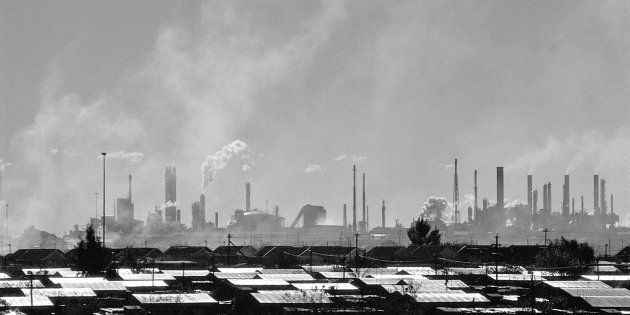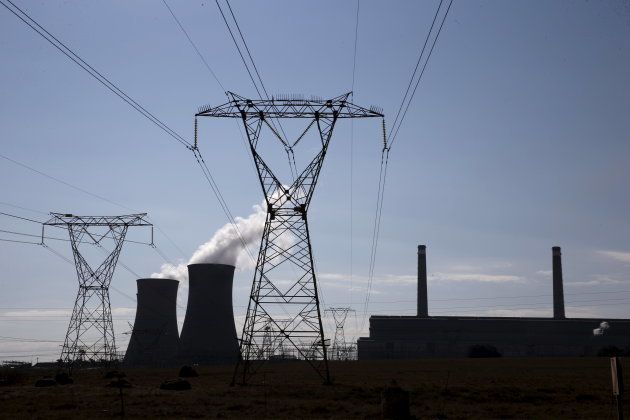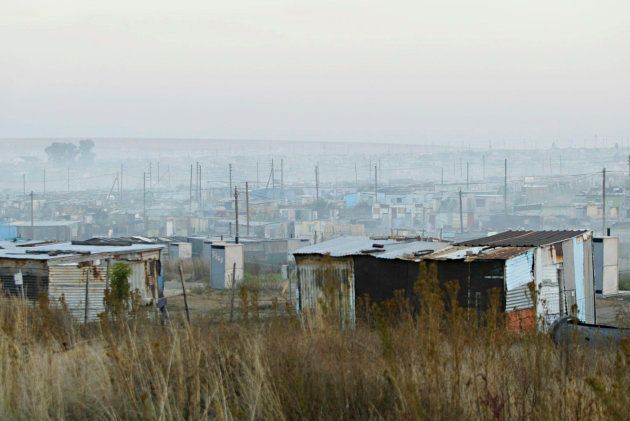
South Africa's economy is dominated by the minerals-energy complex (MEC). This has made for a highly concentrated economy – one in which wealth and the power to direct development is held by a very few large corporations.
It has produced one of the most unequal economies in the world, and also one of the most energy-, carbon- and pollution-intensive.
Eskom was established as a state-owned corporation in 1922 with a mandate to supply cheap and abundant electricity to industry. Cheap electricity, in turn, relied on cheap coal dug out by cheap labour and burnt without caring about pollution.

The concentration of power was consolidated following the Second World War. Anglo American dominated mining. It led the development of the deep and energy-intensive Free State and West Rand goldfields, and was Eskom's biggest customer. It was also the leading coal miner and Eskom's biggest supplier.
The apartheid government came to power in 1948 and poured resources into MEC megaprojects. Iscor's massive Vanderbijlpark iron and steel plant, together with a new town to house the workers, was already under construction.
The model was then repeated south of the Vaal River with the construction of the Sasol oil-from-coal plant, with Sasolburg as the company town.

Both these new towns were laid out as "garden cities", with wide tree-lined streets for white managers and workers.
The giant plants, however, were also giant polluters, and the planners made sure to keep the white suburbs out of the prevailing plume of air pollution. The top managers lived furthest from the plants on the banks of the river.
Black workers were to be housed close to the plants. As one planning document put it, "Industrialists will, therefore, have large non-European labour reserves in close proximity to their undertakings, so that the minimum time will be lost in getting to and from work. [This will] also obviate the traffic of non-Europeans through European townships while on their way to work."
In Vanderbijlpark, Bophelong and Boiphatong were located on either side of the Iscor plant. Boipatong, to the east, takes the full blast of pollution carried on the prevailing wind.
Zamdela in Sasolburg was similarly located on the far side of the plant from the white town and in the path of Sasol's terrible pollution.
This pattern was repeated in the late 1970s when Sasol built its new plant on the Highveld.
Secunda, the white town, was laid out as a garden city upstream and upwind of the plant. It even has a small wildlife park to show, as Sasol puts it, that "nature and technology should coexist".
Black people were relocated to eMbalenhle, downwind and downstream of the plant and next to the massive discard dumps, ash dumps, tar pits and effluent ponds.
Inside the apartheid workplace, meanwhile, black workers were subject to "baasskap", the tyranny of white workers. Just as they lived in the path of pollution, they were also forced to the hazardous front of production with minimal protection.

Baasskap was challenged by the unions created by black workers in the 1970s and 80s. But many of the gains made, including the transformation of labour law after 1994, have been undermined by the casualisation of labour.
Following long-running campaigns by communities on the frontline of industrial pollution, a new Air Quality Act (AQA) was passed in 2005. It replaced the misnamed Air Pollution Prevention Act (APPA) introduced by the apartheid government in 1965.
The AQA is meant to give effect to people's constitutional right to "an environment not harmful to their health".
As with labour rights, however, environmental rights are eroded in practice – and the new regime retains the character of the old: people's health is neglected while the environmental authorities are politically weak, poorly resourced and reluctant to 'burden industry' with effective regulation.
The Vaal Triangle and the Highveld have both been declared "air-quality priority areas" in terms of the AQA – but a decade later, the air is as foul as ever.
